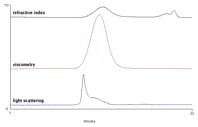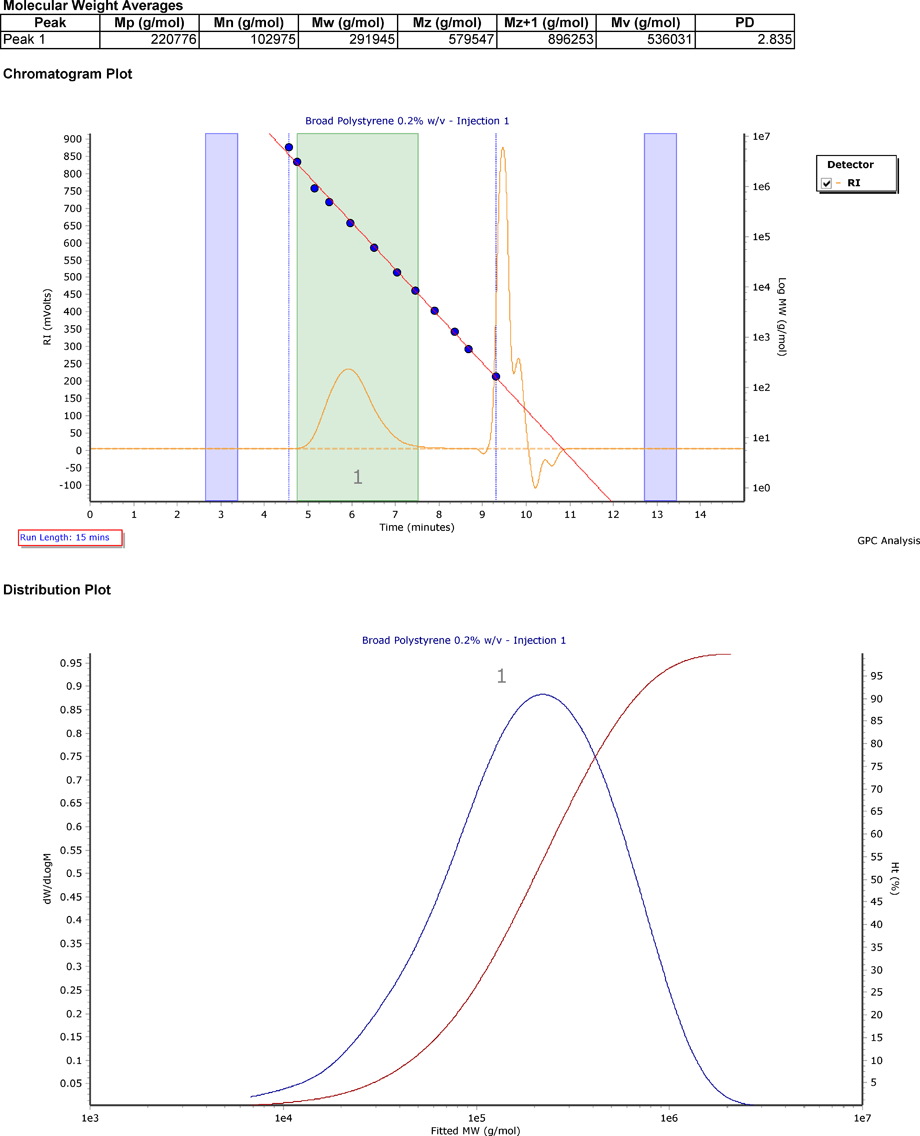Access Agilent eNewsletter July 2015
>> Update My Profile | Subscribe to Access Agilent | Article Directory

Fast, easy polymer characterization with the Agilent 1260 Infinity GPC/SEC System
By Graham Cleaver
Agilent Business Development Manager for ELSD/GPC/RID
Agilent offers a complete range of instrumentation, columns, standards, and software to suit a wide range of gel permeation and size exclusion chromatography (GPC/SEC) applications – presenting the ideal solution for polymer analysis. The Agilent 1260 Infinity Series modular approach replaces the GPC50 integrated system and can be configured as a dedicated molecular weight analyzer for customers wishing to use an Agilent 1260 HPLC system and add GPC functionality.
All of the performance features and benefits associated with the Agilent 1260 Infinity Series are equally as important for GPC/SEC. The unique dedicated software simplifies and facilitates the workflow, making it even quicker and easy to perform high-quality GPC. Control, collection, and data processing from all 1260 modules provide the most reliable and reproducible results for the ultimate confidence in calculated data. Long system uptime means a low cost of ownership. For any busy laboratory, a dependable and reliable system is essential to ensure high sample throughput and efficiency.
 Enlarge
Enlarge
Figure 1. Overlay of 10 consecutive runs per day over 20 days shows remarkable daily and day-to-day precision of retention times.
Precise, reproducible and flexible
Any Agilent 1260 HPLC system can be used for GPC applications. Since the majority of polymers do not possess a UV chromaphore, Agilent 1260 Infinity Refractive Index Detector (RID) is the detector of choice. Excellent baseline stability is crucial in obtaining accurate, reproducible molecular weights. GPC is almost always an isocratic separation mechanism, but the versatility of the 1260 offers the ability to also run HPLC applications on the same system.
The Agilent 1260 Infinity Column Compartment accommodates up to three 30 cm GPC columns with high precision temperature control. The ability to operate at temperatures up to 80°C is important because some solvents require elevated temperature to reduce the eluent viscosity (examples include DMF, m-cresol, and DMSO). A shift in retention time related to poor temperature control could result in a change in molecular weight of many thousands of daltons. Variations in flow rate have the same effect as changes in temperature and will affect retention time and reproducibility (Figure 1). The high performance Agilent 1260 Infinity Isocratic Pump is essential in delivering consistent and dependable molecular weights.
 Enlarge
Enlarge
Figure 2. Analysis results for a resin sample that shows the effects of degradation. Identification of branching indicates how a polymer will process and perform during molding.
Boost your performance with advanced detection techniques
The Agilent 1260 Infinity Multi-Detector GPC/SEC System is a high-end multiple detector platform which provides accurate molecular weight data independent of the chemistry of the standards, while providing insight into the behavior of the polymer in solution. The light Scattering detector provides absolute molecular weights without the need for a column calibration, saving time and increasing precision. The addition of viscometry provides the complete solution for the assessment of molecular size and radius of hydration which are important factors in assessing the behavior of the molecules in solution. A typical example (Figure 2) is a resin, which is used in many applications where toughness and resistance to damage are highly advantageous properties. It is important to monitor the effects of degradation in the production of moulded parts. The chromatogram shows that by using speciality detectors we can see evidence of a small amount of very high molecular weight material that is not detected using RI alone. Identification of branching is important in predicting how the polymer will process and perform.
 Enlarge
Enlarge
Figure 3. Triple detection analysis using Agilent GPC/SEC software.
Reduce analysis time with specially designed GPC software
Agilent’s specially designed GPC/SEC software delivers rapid, complete instrument control, data collection, and analysis. The design and layout considers user-friendliness of paramount importance. Baselines and integration regions are each specified by a single click, ensuring quick and easy analysis. Comprehensive sample reports can be custom designed and generated with a single click. The reviewer allows everything from raw sample data, distribution plots, and branching data to be simply overlaid and compared.
Templates can be generated and stored for calibrations and samples, facilitating standard operating procedures. All plots can be exported in a variety of standard image formats and raw data can be exported to Microsoft Excel or can be delivered in ASCII format.
Agilent 1260 Infinity GPC – the system of choice
The Agilent 1260 Infinity GPC/SEC solution provides you with the instrumentation, columns, standards, and software you need for all your polymer analysis – from a single vendor. Whatever your application may be, Agilent delivers the applications, service and support you require. More importantly, the cost-effective Agilent1260 Infinity Series maximizes system uptime and offers you confidence in results. The solution is also future-proof, offering you flexibility to upgrade your system by adding new Agilent modules. Take a moment to explore our full line of GPC/SEC, LC and HPLC/UHPLC solutions today.
>> Update My Profile | Subscribe to Access Agilent | Article Directory
Figure 1.

Overlay of 10 consecutive runs per day over 20 days shows remarkable daily and day-to-day precision of retention times.

